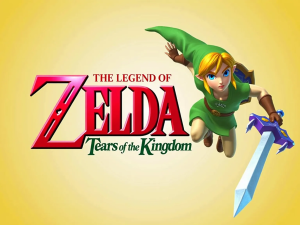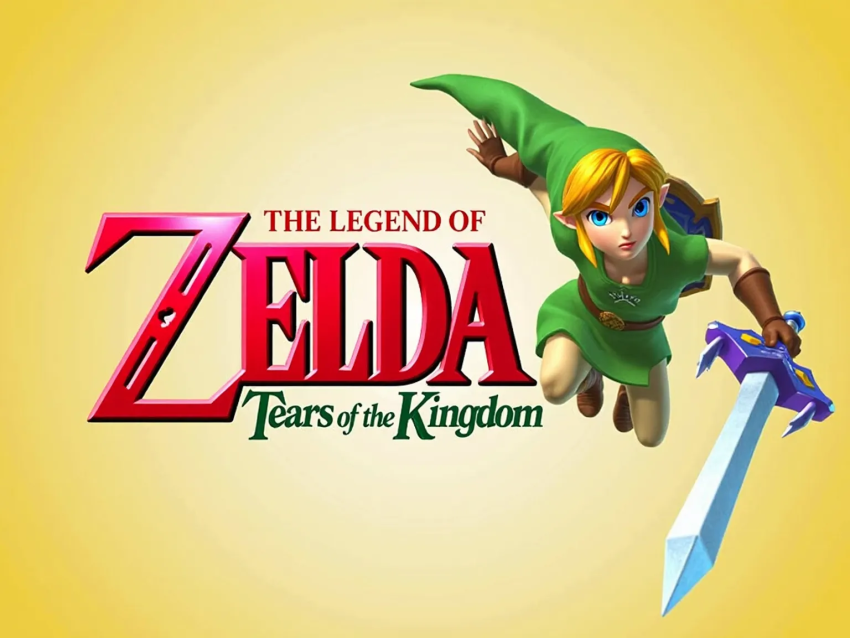Introduction
The Legend of Zelda: Tears of the Kingdom, developed and published by Nintendo, is an action-adventure game released on May 12, 2023, exclusively for the Nintendo Switch. As a direct sequel to the critically acclaimed The Legend of Zelda: Breath of the Wild (2017), it expands the open-world formula with innovative mechanics, a sprawling narrative, and a richly detailed Hyrule. Widely regarded as one of 2023’s best games, it earned accolades like IGN’s Game of the Year and a nomination for Game of the Year at The Game Awards. This article delves into the game’s development, story, gameplay, cultural impact, and lasting legacy, offering a comprehensive look at this landmark title.
Development and Release
Development of Tears of the Kingdom began shortly after Breath of the Wild’s release, with director Hidemaro Fujibayashi and producer Eiji Aonuma aiming to push the open-world concept further. Initially planned as DLC, the project grew into a full sequel due to the team’s ambitious ideas, particularly the sky-based exploration and new mechanics like Ultrahand. Built on an enhanced version of the Havok physics engine, the game leverages the Switch’s capabilities to deliver a seamless experience despite hardware limitations.
Announced at E3 2019 with a teaser trailer, the game faced delays due to the complexity of integrating sky islands and underground areas. Nintendo confirmed the title and May 2023 release date in September 2022. Upon launch, it sold 10 million copies in three days, becoming the fastest-selling Zelda game. A Collector’s Edition, including an artbook and steelbook, and themed Switch OLED model accompanied the release, fueling fan excitement.
Curious about how in-game economy compares to real-world trading? Our articles break it down simply
Story and Setting
Set years after Breath of the Wild, Tears of the Kingdom follows Link and Princess Zelda in a revitalized Hyrule. The story begins with the pair investigating a mysterious gloom beneath Hyrule Castle, where they awaken Ganondorf, the Demon King, sealed centuries ago. A cataclysmic event, the Upheaval, fractures the land, sending sky islands aloft and unleashing gloom that weakens Link. Zelda vanishes, and Link, armed with a mysterious arm from the Zonai, sets out to rescue her and defeat Ganondorf.
Hyrule is transformed, with floating sky islands, expanded caves, and a vast underground Depths region. The setting blends familiar locales like Kakariko Village with new areas, enriched by Zonai ruins and environmental storytelling. The narrative explores themes of sacrifice, legacy, and unity, with Zelda’s journey through Hyrule’s ancient past adding emotional depth. The story’s non-linear delivery, driven by memories and NPC interactions, invites players to piece together its mysteries.
Characters
Key characters include:
-
Link: The silent protagonist, weakened by gloom but empowered by the Zonai arm, embarks on a quest to save Hyrule.
-
Zelda: Hyrule’s princess, whose time-traveling journey reveals the kingdom’s origins. Her growth from Breath of the Wild is a narrative highlight.
-
Ganondorf: A menacing antagonist, voiced with gravitas, whose return threatens global destruction.
-
Riju, Sidon, Tulin, Yunobo: Returning champions, now leading their people, assist Link in regional quests.
-
Mineru: A Zonai sage whose construct aids Link, adding lore depth.
The ensemble cast, supported by strong voice acting, creates a vibrant world, with NPCs like the Zonai Survey Team adding flavor to exploration.
Gameplay and Mechanics
Tears of the Kingdom refines Breath of the Wild’s open-world formula, offering unparalleled freedom through new abilities and an expanded map. Players control Link in a third-person perspective, exploring Hyrule’s surface, skies, and Depths. Core mechanics include:
-
Ultrahand: Allows players to manipulate objects, building vehicles, bridges, or contraptions by combining materials like logs, wheels, and Zonai devices (e.g., fans, rockets).
-
Fuse: Enables weapon and shield customization, merging items like rocks or monster parts for unique effects, such as a rock hammer or homing arrows.
-
Recall: Reverses an object’s motion, used for puzzles and combat, like redirecting enemy projectiles.
-
Ascend: Lets Link phase through ceilings to reach higher areas, streamlining vertical exploration.
The game retains Breath of the Wild’s stamina-based climbing, gliding, and combat, with enhanced physics for dynamic interactions. Shrines (140 total) offer puzzles and combat challenges, rewarding Light of Blessing for stamina or heart upgrades. Divine Beasts are replaced by regional phenomena quests, tackling environmental crises with sage allies. The Depths, a dark mirror of Hyrule’s surface, introduces unique enemies and resources like Zonaite.
Exploration is rewarded with Korok Seeds, armor sets, and hidden lore. The absence of traditional dungeons is offset by open-ended temples, though some fans on X criticized their linearity compared to classic Zelda dungeons. The game’s 60-100 hour runtime, with over 200 hours for completionists, ensures lasting engagement.
buy The Legend of Zelda the original web site

Cultural and Thematic Significance
Tears of the Kingdom builds on Breath of the Wild’s legacy, redefining open-world design with player-driven creativity. Its themes of resilience, collaboration, and environmental stewardship resonate in a post-COVID world, with Zelda’s leadership reflecting empowerment. The game’s blend of Japanese folklore, high fantasy, and steampunk Zonai technology creates a timeless aesthetic.
The community on X and Reddit’s r/zelda praised its “mind-blowing” freedom, with players sharing Ultrahand creations like mechs and airships. However, some debated its $70 price and reused map, though new areas mitigated repetition. Its cultural impact is evident in fan art, cosplay, and academic discussions about emergent gameplay, positioning it as a benchmark for interactive storytelling.
Visuals and Soundtrack
Despite the Switch’s aging hardware, Tears of the Kingdom delivers stunning visuals through artful design. Hyrule’s vibrant fields, ethereal sky islands, and eerie Depths are rendered with a painterly style, enhanced by dynamic weather and lighting. Minor frame-rate dips in busy areas were noted but rarely detracted from immersion.
The soundtrack, composed by Manaka Kataoka and others, blends orchestral and ambient tracks, with standout pieces during sage quests and Ganondorf’s battle. The minimalist piano motifs from Breath of the Wild return, amplifying emotional moments. Sound design, from clanking Zonai devices to Korok chirps, enriches the world.
Reception and Awards
Tears of the Kingdom received universal acclaim, scoring 96/100 on Metacritic based on 114 reviews. IGN called it “a masterpiece,” praising its creativity, while Eurogamer lauded its “astonishing” scope. Some critiques noted dungeon simplicity and occasional performance hiccups. It won IGN’s Game of the Year, Golden Joystick’s Critics’ Choice, and multiple awards at The Game Awards, including Best Action/Adventure, though Baldur’s Gate 3 took Game of the Year.
Sales reached 20.28 million units by September 2023, per Nintendo’s financials, cementing its commercial success. X posts hailed it as “the best open-world game,” with speedrunners and modders pushing its limits.
Legacy and Future Prospects
Tears of the Kingdom redefined the Zelda series, solidifying the open-world formula as its future. Its mechanics influenced 2024 titles like Elden Ring’s DLC, and its success prompted Nintendo to explore further Zelda projects, including a Breath of the Wild film announced in 2023. The game’s modding scene thrives, with tools like Ultrahand inspiring fan-made content.
Nintendo’s decision to delay a Switch successor ensured Tears of the Kingdom maximized the console’s potential, though fans speculate a 4K-enhanced port for the Switch 2. Its emphasis on player agency sets a high bar for open-world design, influencing developers and sparking discussions about creativity in gaming.
Conclusion
The Legend of Zelda: Tears of the Kingdom, released on May 12, 2023, is a triumph of innovation and storytelling. Its expansive Hyrule, revolutionary mechanics like Ultrahand, and emotional narrative elevate it beyond Breath of the Wild. Despite minor flaws, its critical and commercial success—20 million units sold and multiple awards—cement its status as a 2023 masterpiece. For fans and newcomers, it offers an unforgettable adventure, proving Nintendo’s mastery of interactive art. As Link soars through Hyrule’s skies, Tears of the Kingdom soars as a defining achievement in gaming history.
